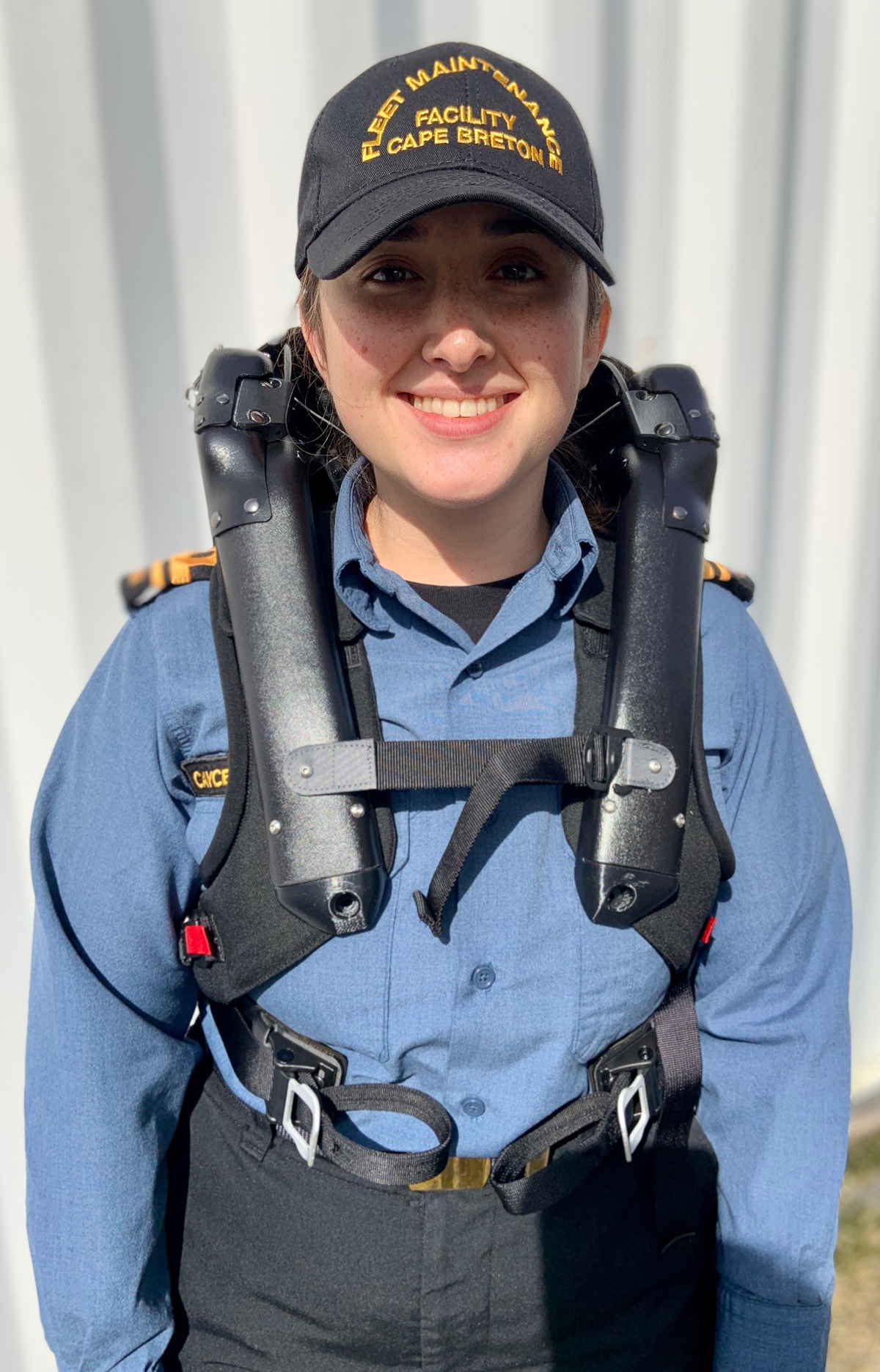Fleet Maintenance Facility Cape Breton introduces exoskeletons
By Lookout Production on Sep 06, 2022 with Comments 0

Sub-Lieutenant Caycedo Buitrago tries on the Mawashi exoskeleton.
Ashley Evans,
FMF Cape Breton/Cape Scott PAO
—
Earlier this year, Fleet Maintenance Facility (FMF) Cape Breton took part in a fitting of exoskeletons for trial use. With the potential to improve safety and efficiency for workers at FMF, Jeff Hawthorne discussed the trial at the Research and Development Center:
What are the exoskeletons, why were they made, and what are they used for?
The exoskeletons are full-body, non-powered (passive), wearable technology designed to benefit users engaged in various logistical tasks.
The technology uses adjustable tensioned straps and bands, and biomechanical design to provide mechanical advantage to the back, shoulders, elbows, and knees. It can redirect the force of a load being carried or physical task being completed, lessening the short and long-term impact on the human body. Each area can be easily engaged or disengaged, depending on the task.
The key advantages to these exoskeletons include:
Three areas with passive mechanical systems: the shoulders, back, and knees – no batteries to charge, no motors that could fail.
Modular and tunable assistance: you can mix the torso, arms, and back component sizes to fit your body and then easily fine-tune that fit to prevent any rubbing or pinching.
How did the Research and Development Division start working on this project?
The exoskeletons we’re using for testing are an innovative product made in Canada by Mawashi Science and Technology. This partnership came about thanks to the Innovative Solutions Canada – Testing Stream (ISC-TS) delivered by Innovation, Science & Economic Development’s (ISED) Innovation Canada Sector.
Under the ISC-TS, innovators are matched with a federal government department to participate in innovation testing. It provides funding support for selected Innovator costs associated with the testing done by a federal testing department (in this case, Research and Development, HMCS Venture, Naval Personnel and Training Group).
What are they made of?
The exoskeletons consist of aluminum and titanium parts, straps, cables, elastomeric bands, 3D-printed parts, and a few machined components.
How many have been purchased?
We have purchased 30 units in a wide range of sizes for our testing, which allows users of all shapes and sizes to participate.
What did the testing entail, and why is it important?
We had one week of testing where groups from Urban Search and Rescue (USAR) and FMF were fitted. They then used the suits in a wide range of scenarios. There will also be a week of more rigorous quantitative testing to scientifically measure the metabolic cost and muscle fatigue with and without the exoskeleton.
We decided to hold testing at the USAR training grounds in Esquimalt because it simulated real-world conditions as much as possible. Both groups reported the exoskeletons provided an advantage in all the tasks we tested.
If it is deemed the exoskeletons would be beneficial for use at FMF, when would they be available?
There should be a very short timeline between the conclusion of the quantitative testing and our ability to turn some of the exoskeletons to FMF for use.
Filed Under: Top Stories
About the Author:






